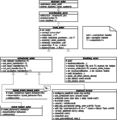欢迎大家赞助一杯啤酒🍺 我们准备了下酒菜:Formal mathematics/Isabelle/ML, Formal verification/Coq/ACL2, C++/F#/Lisp
Actor model
来自开放百科 - 灰狐
(版本间的差异)
小 (→简介) |
小 (→语言&项目) |
||
| 第27行: | 第27行: | ||
*[https://github.com/puniverse/pulsar pulsar] for [[Clojure]] | *[https://github.com/puniverse/pulsar pulsar] for [[Clojure]] | ||
*[[Erlang]] | *[[Erlang]] | ||
| + | *[[Rust]] [https://github.com/rust-lang/rust/issues/3573 actor library] [https://github.com/gamazeps/RobotS RobotS] | ||
*[https://github.com/ponylang/ponyc Pony] is an open-source, actor-model, capabilities-secure, high performance programming language | *[https://github.com/ponylang/ponyc Pony] is an open-source, actor-model, capabilities-secure, high performance programming language | ||
*[https://github.com/jodal/pykka Pykka] is a Python implementation of the actor model | *[https://github.com/jodal/pykka Pykka] is a Python implementation of the actor model | ||
2018年2月23日 (五) 03:21的版本
| |
您可以在Wikipedia上了解到此条目的英文信息 Actor model Thanks, Wikipedia. |
参与者模型推崇的哲学是“一切皆是参与者”,这与面向对象编程的“一切皆是对象”类似,但是面向对象编程通常是顺序执行的,而参与者模型是并行执行的。
目录 |
简介
Actor模型的本质就是消息传输。
作为一种计算实体,Actor对象与原子类似。
参与者是一个运算实体,回应接受到的消息,同时并行的:
- 发送有限数量的消息给其他参与者;
- 创建有限数量的新参与者;
- 指定接受到下一个消息时的行为。
以上操作不含有顺序执行的假设,因此可以并行进行。
发送者与已经发送的消息解耦,是参与者模型的根本优势。这允许进行异步通信,同时满足消息传递的控制结构。
消息接收者是通过地址区分的,有时也被称作“邮件地址”。因此参与者只能和它拥有地址的参与者通信。它可以通过接受到的信息获取地址,或者获取它创建的参与者的地址。
参与者模型的特征是,参与者内部或之间进行并行计算,参与者可以动态创建,参与者地址包含在消息中,交互只有通过直接的异步消息通信,不限制消息到达的顺序。
语言&项目
- ActorX
- Akka
- pulsar for Clojure
- Erlang
- Rust actor library RobotS
- Pony is an open-source, actor-model, capabilities-secure, high performance programming language
- Pykka is a Python implementation of the actor model
- drama is an Actor model implementation for JavaScript and Node.js
- nactor Node.js actor model framework for game
- qnode(cute node) - C + Lua + Actor Model = Erlang-like system
- phacterl The Actor Model in PHP
- LuActor - Actor Model for Lua
- GearPump
- CAF C++ Actor Framework
- Skynet game framework
- Orleans Distributed Virtual Actor Model in .NET OrleansContrib Orleans用户 尤其Halo游戏的成功应用
- Cricket An actor framework for F#
- Reactive Messaging Patterns with the Actor Model--Applications and Integration in Scala and Akka
- Game Communication Environment (GCE)
图集
链接
分享您的观点


